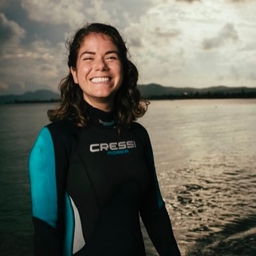
Melissa Márquez
Freelance Writer at Forbes
Multi-hyphenate #LatinainSTEM 🇵🇷🇲🇽 (she/her) | wildlife educator & marine scientist 🦈 #sharks #scicomm | writer: @forbesscience @CosmosMagazine
Articles
-
1 week ago |
forbes.com | Melissa Márquez
Roy Scheider and Richard Dreyfuss stand next to a shark with a hook piercing through it in a scene ... More from the film 'Jaws', 1975. (Photo by Universal Pictures/Getty Images)Getty ImagesWhen Jaws hit theaters in 1975, it changed the way people saw sharks literally overnight. Before the film, most beachgoers didn’t think twice about what swam below the waves. But after that ominous music and the now-iconic dorsal fin? Well, sharks became public enemy number one.
-
1 week ago |
forbes.com | Melissa Márquez
An eight-year study highlights Biscayne Bay as a vital nursery and seasonal refuge for great ... More hammerhead sharks, underscoring its importance across life stages and for long-term shark conservation. ulia Wester/Shark Research and Conservation ProgramIn the warm, shallow waters just off the city of Miami, is a haven for one of the ocean’s most iconic yet critically endangered marine predators.
-
1 week ago |
forbes.com | Melissa Márquez
The fictional fear sparked by Jaws triggered decades of real-world harm, but today’s science and ... More tourism are turning things around. (Photo by Chris Polk/FilmMagic for Universal Studio Home Video)FilmMagic for Universal Studio Home VideoIn 1975, a mechanical great white shark terrorized beachgoers on the big screen in Jaws, launching a cultural phenomenon and an ecological crisis.
-
2 weeks ago |
forbes.com.br | Melissa Márquez
Durante décadas, o gigantesco tubarão pré-histórico conhecido de forma ameaçadora como “The Meg”, megalodon, foi retratado como um enorme predador que caçava o único oponente à altura nos oceanos da época: as baleias. Mas uma nova pesquisa sugere que a realidade era mais complexa — e muito mais interessante.
-
2 weeks ago |
forbes.com | Melissa Márquez
A new classification of white shark injuries is helping scientists understand the behavior and ... More biology of this top ocean predator. GettyDespite decades of research, some of the most basic facts about great white sharks (Carcharodon carcharias) remain unknown. We don’t know how long their gestation period is, where they mate or give birth, or how they interact with one another beyond occasional surface observations. Now, this isn’t due to a lack of interest or effort.
Try JournoFinder For Free
Search and contact over 1M+ journalist profiles, browse 100M+ articles, and unlock powerful PR tools.
Start Your 7-Day Free Trial →X (formerly Twitter)
- Followers
- 25K
- Tweets
- 63K
- DMs Open
- Yes